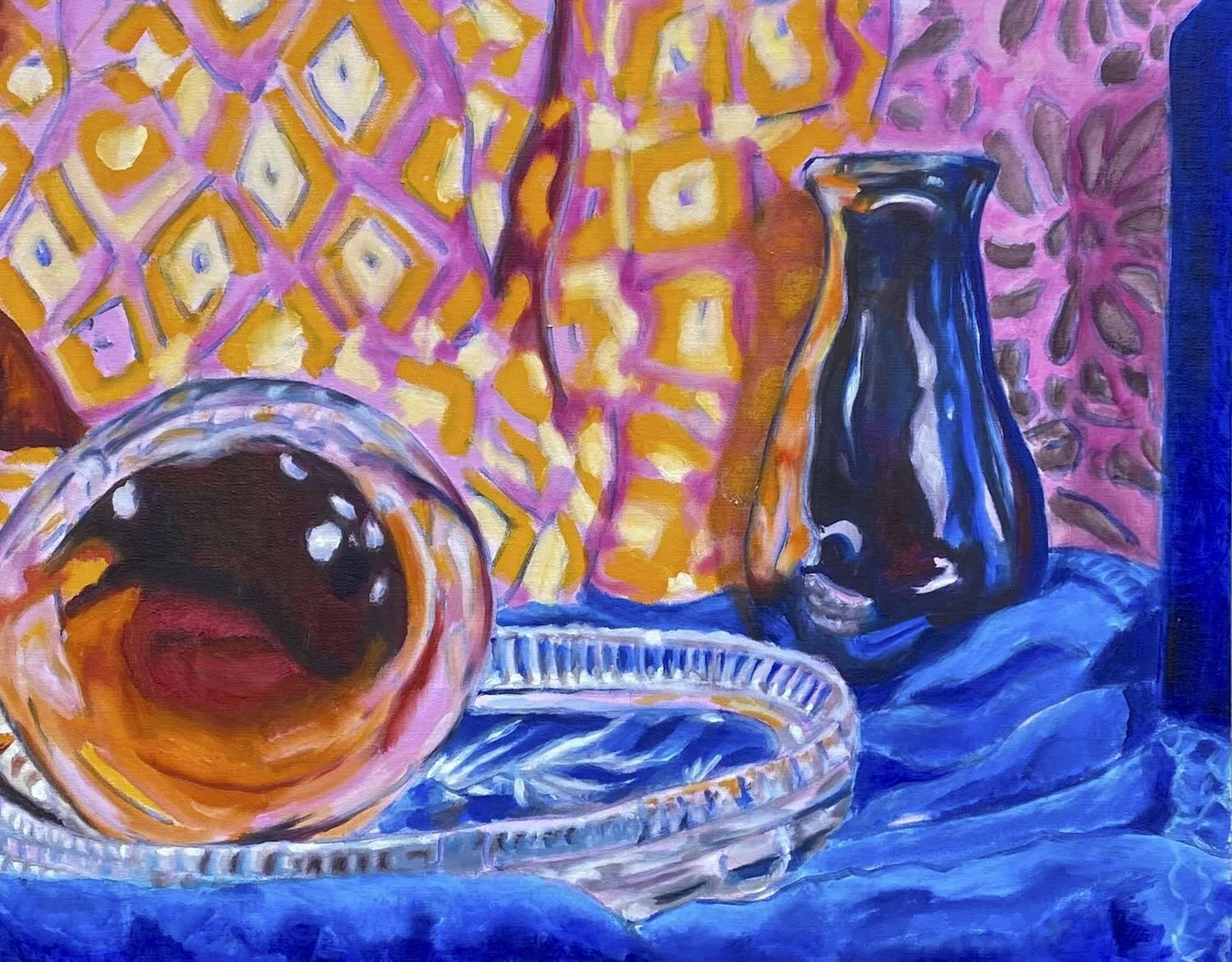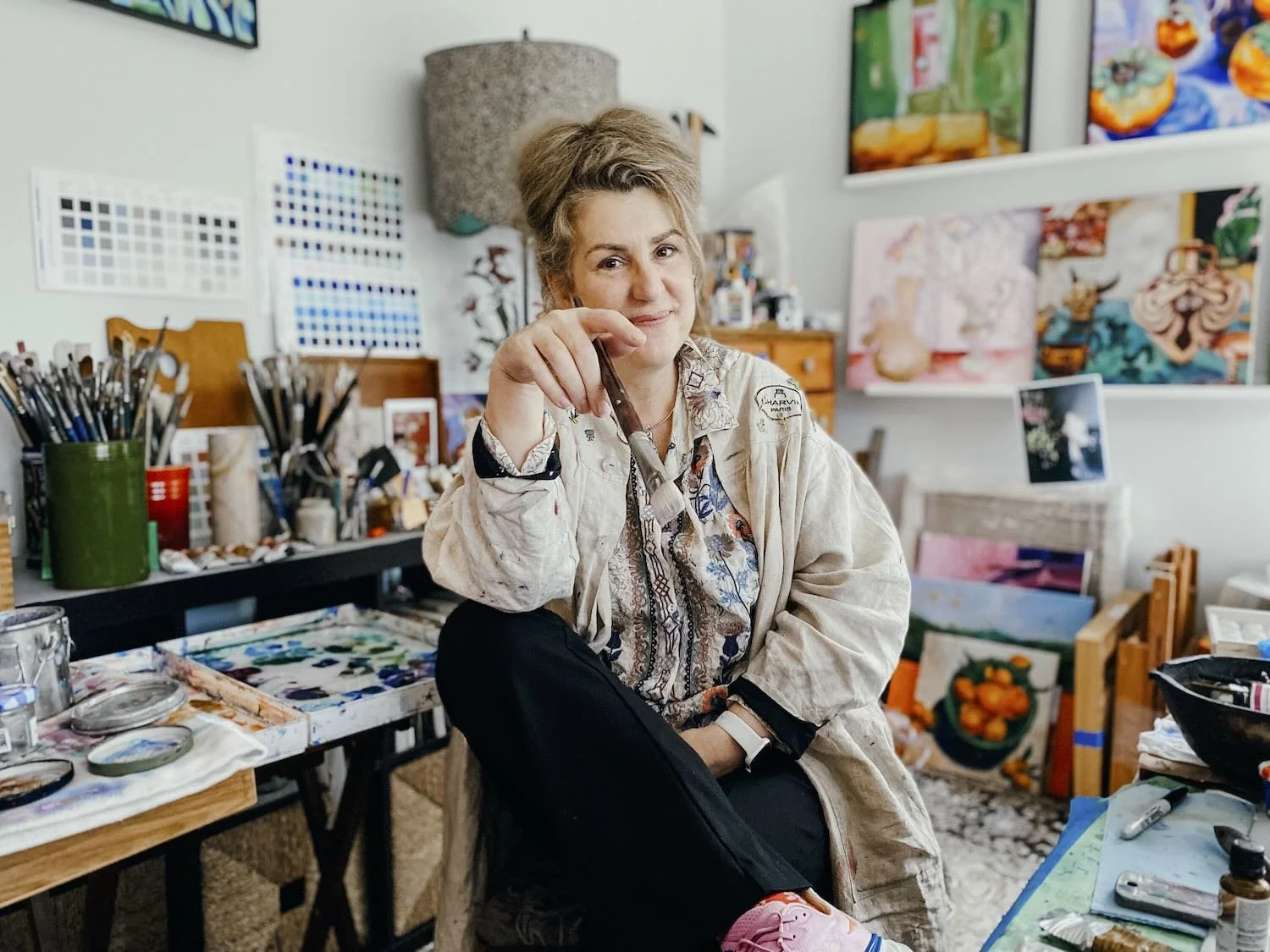A CURATED LIST OF
Frequently Asked Questions
Find answers to your most pressing questions about the experience of collecting a Laure Painting Studio original. I know purchasing fine art is a deeply personal journey, and I’m committed to ensuring it's a seamless, enriching experience for you.
The Laure painting studio Collector experience
-
White Glove Packaging
Each painting is encased in archival materials and hand-packed with exceptional care, ensuring a museum-quality unboxing experience.
-
Virtual Home Trial
Visualize your new piece within your own space before making a purchase, with our bespoke virtual home trial service.
-
Certificate of Authenticity
A receipt and signed authenticity document accompany each artwork, verifying its originality and safeguarding its value for generations to come.
-
Artwork Story Booklet
Receive an elegantly designed booklet that dives deep into the story behind your painting, including its inspiration, sketches, and notes from Laure.
-
Priority Previews
Be among the first to view and purchase future collections, with exclusive access to priority previews.
Choosing and Caring for Your Art
-
The best way to clean an oil painting is to use a lint free microfiber cloth to lightly dust the surface. Never use water or household cleaners on a painting surface.
-
Life can get messy. Contact Laure to explain what kind of damage we’re talking about. Some kinds might be fixable, while others might need a professional intervention.
-
You probably had a spot in mind when you purchased your fine art oil painting. There is no wrong place to hang your painting. As long as it’s out of direct sunlight, safe from damp, humidity, and smoke (above a fireplace for example), and away from high traffic bumps, trust your aesthetic sense. I’m happy to give individual advice on painting placement, too, and I love receiving photos of where you placed your painting.
-
There are loads of very helpful information online about framing and hanging your art. Keep in mind, you want quality art framing materials made specifically for hanging paintings. These will keep your walls and paintings safer. Eventually I will write a document outlining best framing and hanging practices, but until then:
I am happy to discuss framing and hanging with my collectors. I can help you come up with a system that works for you if you are having trouble finding the answers you need online.
I find that my paintings look best in what is called a floating frame. This means the art hangs slightly spaced away from the edges of the frame, as if floating within the frame.
You can, of course, frame your art in whatever way you like best. I worry that big gold frames detract and overpower the art work, but if you go to any museum, you’ll see that many curators disagree. A lot of colorful post impressionist or expressionist art is hung in over-the-top thick frames. You notice the frame before you look at the art. But the beauty of being a collector and curator of your own art collection is, you get to choose what you like best.
I would just add that if you don’t want a floating frame, take a look at plein air frames. They have a simplicity that I think works well with my pieces.
Another option is getting the expertise of a professional framer. This not only supports local art businesses, but you would also get a perfectly framed piece of art for display. Eventually, this could become an invaluable resource as your collection grows.
I like the finished effect of a frame but note that some people don’t use frames at all. If you are thinking of this, contact me prior to purchase, so we can discuss the edges of the specific painting you are thinking of adding to your collection. Some pieces might be more amenable to this type of hanging than others. Most, but not all of my canvases are “gallery wrapped,” which means the canvas stretches over the edges of the painting and is attached to the back, covering the stretcher bars. A few of my art pieces are painted on canvas board, and because this substrate is thin, it would be best to frame these pieces. If you don’t find the answers you are looking for in my descriptions in the shop, send me an email and ask. I’m happy to answer questions.
-
Choosing a painting for your home is a deeply personal decision. Buying original art is so much more than a transaction, or an investment. It’s choosing something that resonates with who you are, along with all of the unique facets and complexities that make you, you. By choosing a painting, you are creating your own narrative about what matters to you: your taste, your inspirations, the depth and intricacies of your history, and your relationship to that most intimate and personal space, your own home. When a painting leaves my studio, it acquires an added layer of meaning uniquely created by the collector. This added depth and meaning are only possible when you choose something that catches your attention and speaks to you. Choose paintings that light you up, and you can’t go wrong.

Ready to Charge Your Space With Art?
HERE’S HOW:

